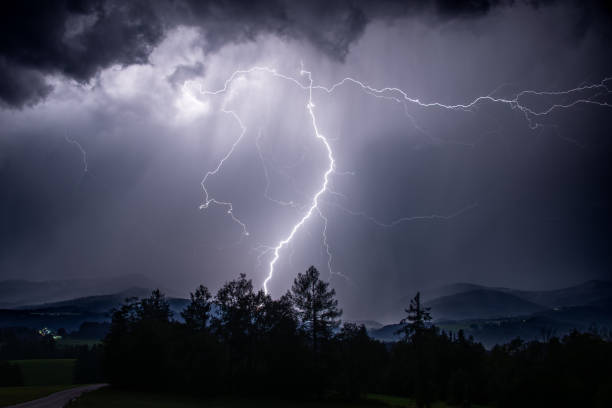Since ancient civilizations first looked skyward, humanity has sought to influence the elements. From rain dances performed by Indigenous peoples to elaborate rituals in agrarian societies, the dream of controlling the weather has long captured the imagination. Water, wind, and storms have dictated survival, shaping economies, politics, and daily life. In the modern era, this age-old desire has evolved into scientific inquiry, with researchers asking: can humans truly manipulate the atmosphere to produce rain, disperse storms, or cool regions under threat from climate extremes?
Weather, at its essence, is the product of complex interactions among the atmosphere, oceans, land surfaces, and solar energy. It is governed by principles of thermodynamics, fluid dynamics, and chemistry. Controlling it is not merely a matter of opening a valve or turning a dial; it is an endeavor that requires understanding and influencing systems so vast that a hurricane alone can encompass energy equivalent to a nuclear arsenal. Yet despite these challenges, scientists have made progress, hinting at the tantalizing possibility of partial control over localized weather events.
The Science of Weather Modification
The most studied method of weather manipulation is cloud seeding. First tested in the mid-20th century, cloud seeding involves dispersing substances into clouds to encourage precipitation. Silver iodide, potassium iodide, and even sodium chloride can serve as nuclei around which water droplets condense, potentially transforming otherwise dry clouds into rain-bearing formations. The earliest experiments, conducted by scientists such as Vincent Schaefer and Irving Langmuir in the 1940s, showed that under certain conditions, cloud seeding could indeed trigger precipitation.
Modern applications of cloud seeding have expanded to include drought mitigation, snowpack enhancement, and even hail suppression. Countries like China, the United Arab Emirates, and the United States have invested heavily in cloud seeding programs. For instance, China has conducted large-scale projects ahead of significant events like the 2008 Beijing Olympics, attempting to ensure clear skies by inducing precipitation elsewhere. In the United Arab Emirates, cloud seeding efforts have aimed to increase rainfall in arid regions where water scarcity is a constant threat.
Despite these successes, cloud seeding remains a nuanced and uncertain tool. The process requires precise meteorological conditions—clouds must contain enough supercooled water for the seeding particles to work. Even then, the increase in precipitation is often modest and difficult to quantify. Critics argue that attributing rainfall to cloud seeding can be statistically ambiguous, as natural variability in weather can mimic or obscure the effects of intervention. Thus, while cloud seeding demonstrates the feasibility of influencing localized weather, it falls far short of complete control.
Lessons from Geoengineering Experiments
Beyond cloud seeding, scientists have considered more ambitious strategies under the broader umbrella of geoengineering. Solar radiation management and aerosol injection, for example, propose altering Earth’s energy balance to reduce global temperatures. These methods are not strictly weather control—they aim to modulate climate—but they illustrate the scale and complexity of manipulating atmospheric systems.
Injecting reflective aerosols into the stratosphere could, in theory, reduce solar heating, cooling regions prone to heatwaves. However, such interventions carry unpredictable consequences. The atmosphere is an interconnected system: cooling one area might shift precipitation patterns elsewhere, trigger droughts, or intensify storms. Models suggest that tampering with atmospheric chemistry on a planetary scale could create feedback loops that are difficult to anticipate, echoing the cautionary tales of past large-scale environmental interventions.
One historical example is Project Stormfury, a U.S. government experiment from the 1960s and 1970s, aimed at weakening hurricanes through cloud seeding. While initial tests seemed promising, later analysis revealed that natural variability in hurricanes often confounded results. Storms are not static; they evolve dynamically, and altering one component can have unintended consequences elsewhere in the system. Project Stormfury ultimately underscored both the potential and the limits of weather modification, revealing how even seemingly simple manipulations of the atmosphere involve immense complexity.
Modern Approaches: Satellites, AI, and Precision Meteorology
Today, weather modification research benefits from tools that would have seemed like science fiction a century ago. Satellites allow continuous global observation, providing real-time data on cloud formation, precipitation patterns, and storm trajectories. Supercomputers simulate atmospheric dynamics with unprecedented resolution, enabling scientists to predict the potential outcomes of interventions with greater accuracy. Artificial intelligence now assists in identifying optimal conditions for cloud seeding, estimating where and when precipitation is most likely to be enhanced.
In addition to rainmaking, scientists are exploring techniques to mitigate extreme weather events. For example, urban heat islands—areas where city infrastructure traps heat—can be cooled using reflective materials and strategic landscaping, indirectly influencing local atmospheric conditions. There is also research into using targeted aerosols to suppress hail formation or reduce lightning frequency in critical regions. While these methods are still in early stages, they highlight a shift from attempting to control weather wholesale toward precise, localized interventions.
Ethical and Political Dimensions of Weather Control
Scientific feasibility is only part of the equation. Weather modification raises profound ethical, legal, and geopolitical questions. Clouds do not respect national borders, and altering precipitation in one region can inadvertently deprive downstream areas of rainfall. If a country successfully induces rain during a drought, neighbors may blame it for subsequent shortages, raising the specter of “hydro-diplomatic conflict.” International law on weather modification remains nascent, with treaties such as the 1977 Environmental Modification Convention prohibiting hostile use of environmental manipulation but leaving room for peaceful experimentation.
Furthermore, there is a moral question: should humanity attempt to control forces that have evolved over millennia? Critics argue that the risks of unintended consequences—ecological disruption, altered ecosystems, or new weather extremes—may outweigh the benefits. Supporters counter that climate change and growing water scarcity necessitate intervention; the alternative may be greater suffering. In this debate, science is inseparable from values, and weather control becomes as much a question of stewardship as of physics.
Climate Change: A Catalyst for Innovation
The urgency of climate change has intensified interest in weather modification. Rising global temperatures increase the frequency and intensity of heatwaves, hurricanes, floods, and droughts. Water scarcity threatens millions, particularly in arid regions. In this context, techniques like cloud seeding, atmospheric water generation, and even large-scale geoengineering are no longer hypothetical experiments—they are potential tools for survival.
Scientists are exploring hybrid strategies. For instance, coupling cloud seeding with reservoir management could maximize the utility of artificial rainfall, while precision forecasts allow interventions to target vulnerable agricultural zones. Some researchers investigate enhancing snowfall in mountainous regions to sustain downstream water supplies. Others examine whether controlled aerosol release could mitigate heatwaves without triggering harmful side effects. Each approach illustrates a delicate balance: attempting to manipulate nature while remaining cognizant of its complexity and power.
The Limits of Human Control
Despite remarkable technological advances, total mastery over weather remains elusive. Weather systems are inherently chaotic, sensitive to initial conditions in ways that make precise prediction and control extraordinarily difficult. Even small interventions can propagate through the atmosphere unpredictably. A seemingly minor change in one location could influence storm formation thousands of miles away, as suggested by the principles of atmospheric dynamics and chaos theory.
Moreover, the scale of energy involved in weather phenomena is staggering. A typical thunderstorm releases energy equivalent to several nuclear bombs. Hurricanes, tornadoes, and large-scale precipitation events operate on scales that humans can influence only minimally. While cloud seeding or localized interventions can nudge atmospheric processes, they cannot redirect the immense forces of nature entirely.
Case Studies: Where Weather Modification Has Worked—and Where It Has Failed
Several examples illustrate both the promise and the limits of weather control. In the United Arab Emirates, cloud seeding programs have increased rainfall by measurable amounts, though the effect remains dependent on natural cloud availability. In China, artificial rain has been induced to clear skies for major events, demonstrating precise timing capabilities.
Conversely, attempts to weaken hurricanes have largely failed. Project Stormfury, despite sophisticated seeding techniques, could not reliably reduce storm intensity. Similarly, hail suppression efforts in the United States have had mixed results; while some regions report fewer hail incidents, statistical analysis often reveals that natural variability accounts for much of the observed effect. These case studies reveal a common theme: humans can influence weather locally and under favorable conditions, but large-scale or universal control remains beyond reach.
Philosophical Reflections: Humanity’s Role in Nature
The quest to control weather reflects a deeper tension between human ambition and natural forces. Science empowers us to intervene in ways unimaginable to our ancestors, yet it also reminds us of humility. Weather is not merely a technical problem; it is a manifestation of Earth’s complex, dynamic systems. To influence it responsibly requires not just skill, but understanding, foresight, and restraint.
There is also an aesthetic and emotional dimension. Storms, winds, and rainfall are part of the rhythm of life, shaping landscapes, ecosystems, and human culture. The desire to control these forces reflects a profound human impulse to master uncertainty, but it also poses the question: what is lost when we impose order on chaos? Scientists grapple with these issues daily, balancing innovation with caution, ambition with respect for natural limits.
The Future of Weather Modification
Looking ahead, the possibilities are both exciting and daunting. Emerging technologies such as nanomaterials for cloud nucleation, high-resolution climate modeling, and AI-driven prediction systems offer unprecedented precision. Researchers are exploring atmospheric water harvesting to provide clean water in arid zones, while others investigate artificial snowmaking to sustain glaciers and water supplies. Each development pushes the boundary of what humans can attempt—but also reminds us that the sky is not a laboratory.
Collaboration and regulation will be key. International cooperation, transparency, and adherence to ethical standards are essential to prevent misuse or unintended consequences. Scientists increasingly recognize that weather modification is not a solitary endeavor but a collective responsibility, one that must balance human needs with ecological integrity.
Conclusion: Partial Control, Profound Implications
In the end, scientists are edging closer to controlling aspects of weather, but the dream of total mastery remains distant. Techniques like cloud seeding demonstrate that localized influence is possible; precision meteorology and advanced modeling provide insights into timing and placement. Yet the atmosphere is a chaotic, interconnected system, and large-scale manipulation remains beyond human reach.
Even limited successes carry profound implications. The ability to increase rainfall, reduce hail damage, or mitigate drought could reshape agriculture, water security, and disaster preparedness. Yet with these powers come ethical dilemmas and ecological responsibilities. Humanity is learning that controlling the weather is not a matter of conquest, but of careful stewardship, informed by science and guided by humility.
The pursuit itself reflects a broader truth about human curiosity and ingenuity. For millennia, we have dreamed of turning the sky into a partner, rather than a capricious adversary. Today, science has brought that dream closer than ever—but it also reminds us that nature’s grandeur is not ours to command entirely. We may influence it, nudging its patterns and responding to its moods, but we remain guests in the atmosphere, bound by the limits of knowledge and the consequences of intervention.
The story of weather control is ongoing—a blend of aspiration, caution, and relentless curiosity. Humanity’s ability to manipulate the sky will never be absolute, but it is increasingly real. And in that pursuit lies a reflection of our deepest desire: to understand, to protect, and to coexist with the powerful forces that shape life on Earth.






